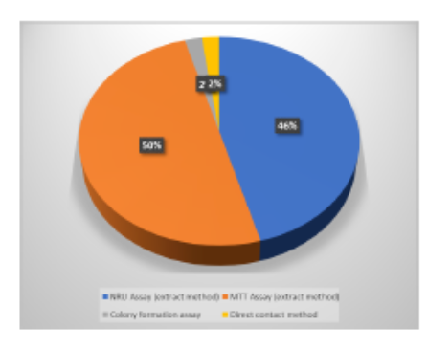


Indian Journal of Science and Technology
DOI: 10.17485/IJST/v16i30.pradeepa
Year: 2023, Volume: 16, Issue: 30, Pages: 2350-2357
Original Article
P Pradeepa1, B Brabu1, S S Murugan2, T N Sathya1, M R Murali1, K R Navaneethakrishnan1, T S Kumaravel3, Sangeetha V Naveen1*
1Toxicologist, Department of Toxicology, GLR Laboratories Private Limited, Chennai, India
2Toxicologist and Managing Director, GLR Laboratories Private Limited, Chennai, India
3Toxicologist and Chairman, GLR Laboratories (Europe) Pvt Ltd, Sharnbrook, United Kingdom
*Corresponding Author
Email: [email protected]
Received Date:18 November 2022, Accepted Date:27 July 2023, Published Date:12 August 2023
Background/Objectives : Hydrogels are highly water-swollen polymeric materials with diverse properties and excellent biocompatibility. Despite their immense potential, hydrogel-based medical devices often exhibit a cytotoxic response, which raises major concerns from a regulatory perspective. The focus of this review is on possible reasons that cause such cytotoxicity and furthermore offers recommendations from a regulatory point of view for a successful biocompatibility assessment of medical devices. Methods: Hydrogel based medical devices intended for clinical use should demonstrate their biocompatibility in a series of preclinical studies based on their type and duration of body contact, as defined in the ISO 10993-Part 1:2018 standard. As a seminal investigation in the biocompatibility assessment, the devices should be tested for cytotoxicity according to ISO 10993-Part 5:2009 using various methods including tests on extracts, direct and indirect contact methods. Findings: This review has summarized various factors that may lead to a cytotoxic response, including sterilization, change in pH, and medium absorption. In this regard, we proposed a stepwise strategy to assess the reason for such a cytotoxic response rather than justifying it with literature and in vivo study results. Novelty: The factors contributing to a positive cytotoxic response are of paramount importance in the field of hydrogel based medical devices. Understanding these factors is crucial for ensuring the safety and efficacy of such technologies. This review serves as a valuable resource in shedding light on these critical aspects from a regulatory perspective.
Keywords: Medical Device; Hydrogel; Biocompatibility; Cytotoxicity; Risk Assessment
© 2023 Pradeepa et al. This is an open-access article distributed under the terms of the Creative Commons Attribution License, which permits unrestricted use, distribution, and reproduction in any medium, provided the original author and source are credited. Published By Indian Society for Education and Environment (iSee)
Subscribe now for latest articles and news.